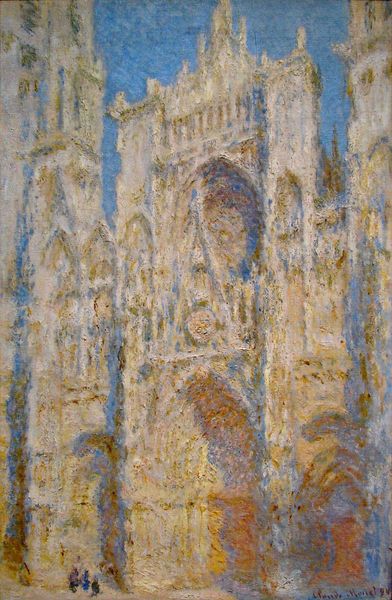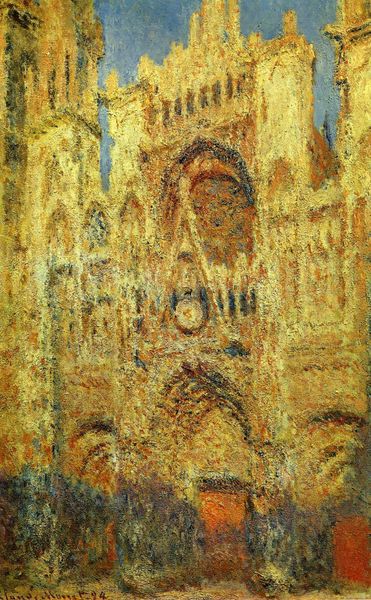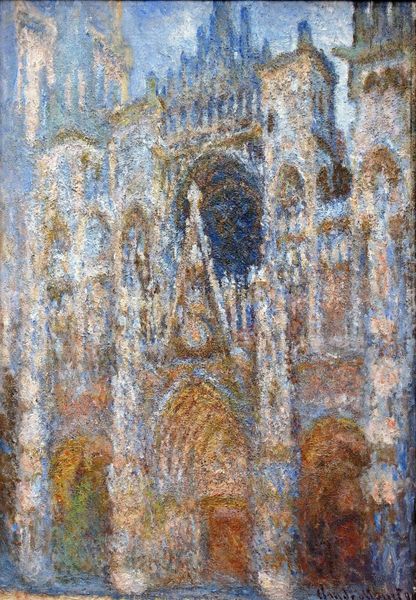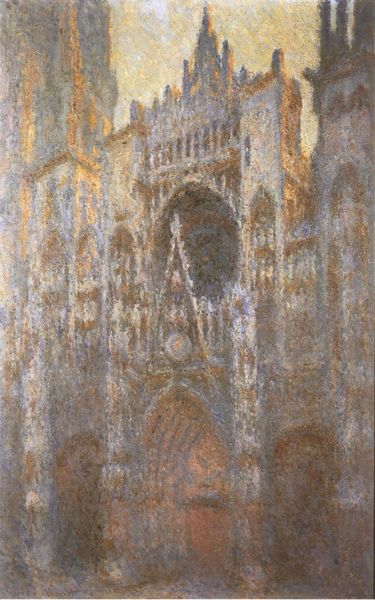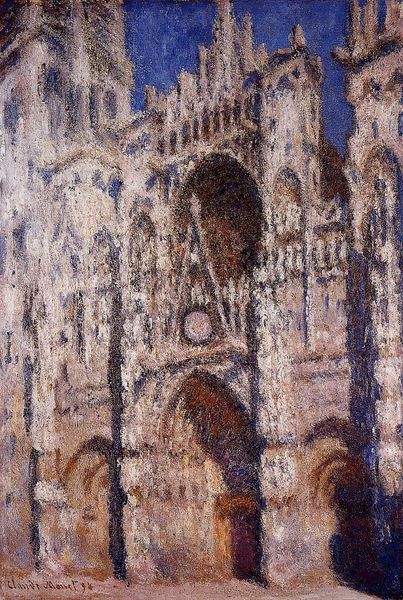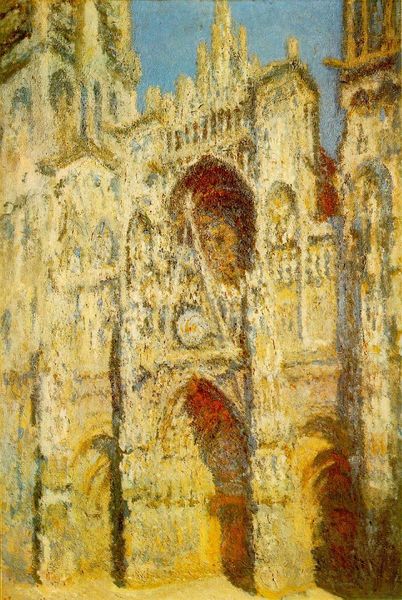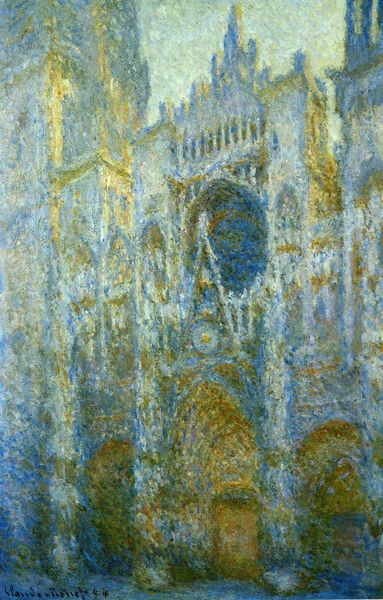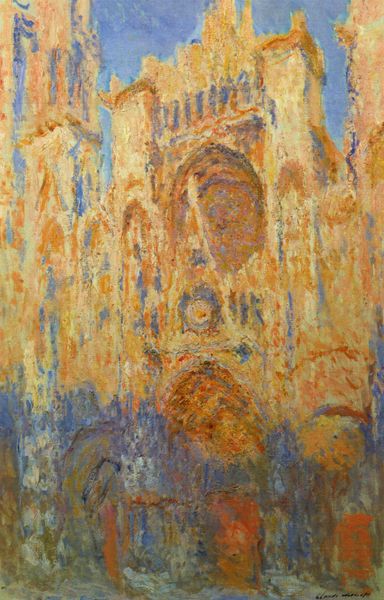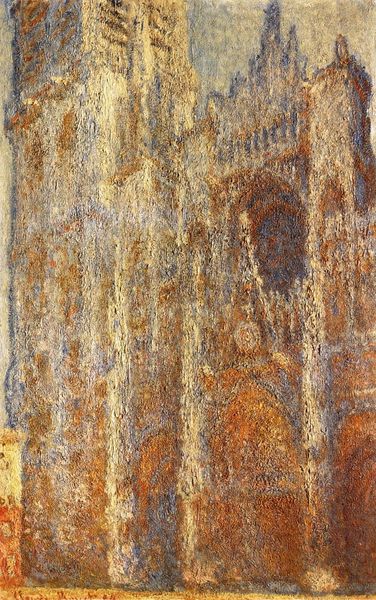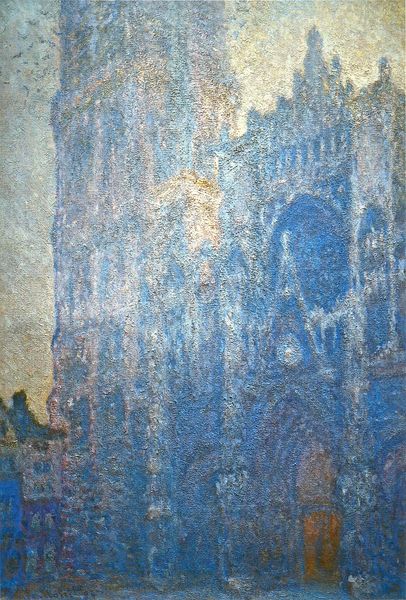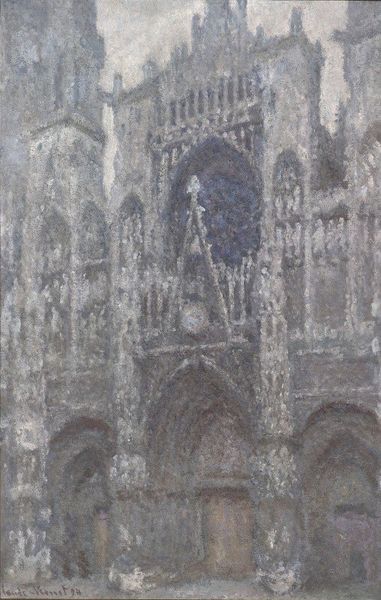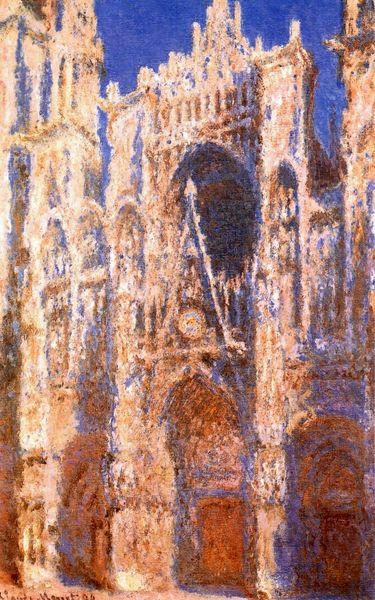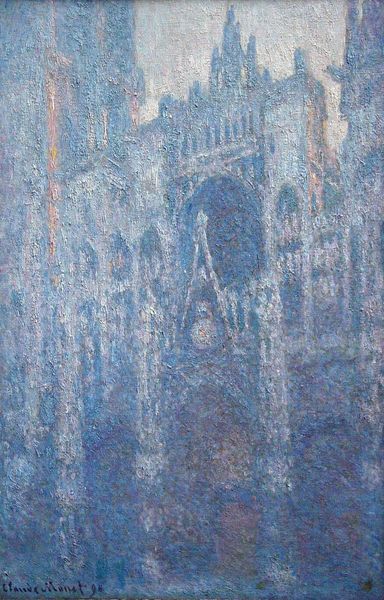
Dimensions: 99.7 x 65.7 cm
Copyright: Public domain
Curator: I’m struck by the monumental scale softened by a kind of shimmering, ethereal light. It's almost as if the building is dissolving into the atmosphere. Editor: That’s a perfect introduction. We are looking at Claude Monet’s "Rouen Cathedral, Portal in the Sun," completed in 1894, currently housed at the Metropolitan Museum of Art. What you're seeing is an oil painting of the west facade of the Rouen Cathedral bathed in sunlight. Curator: Monet chose a Gothic cathedral, a structure synonymous with the power of the church and the state, then seems to make it ephemeral, like a mirage. How might that contrast play out culturally? Editor: I think you nailed it! Cathedrals were, undeniably, power statements. However, late 19th-century France saw the rise of secularism. By capturing its fleeting appearance, Monet, deliberately or not, could be seen as questioning established institutions by emphasizing impermanence and individual experience. Curator: He renders solid stone with such visible brushstrokes and layers of paint. This is so in line with Impressionist techniques, with this active, optical mixing of colors rather than a mimetic representation. But what is he memorializing here: faith, architecture, or visual sensation? Editor: Perhaps all of them at once? Monet painted the Rouen Cathedral numerous times, under different conditions. He treats the building like any other landscape subject. Light transforms the portal into something altogether new. It democratizes its grandeur. But the number of attempts suggests he seeks an essence that exists independent of momentary experience. Curator: This approach certainly challenges the traditional role of religious architecture in art. It feels less about religious piety and more about human perception. I notice it is mostly monochrome with its neutral hues, it also evokes memories and shared symbolism regarding monumental power. Editor: Precisely! By fracturing the surface, he invites the viewer to participate in reconstructing the image, creating meaning, not passively receiving a pre-packaged narrative. That gesture, more than anything else, situates this series within broader currents of modernism. Curator: I find myself seeing beyond the bricks, toward the dissolution of even the most persistent monuments into light itself. Editor: I appreciate how Monet’s vision reminds us of the complex and ever-changing relationship between the observer, the observed, and the forces that shape our perception of reality and our institutions.
Comments
No comments
Be the first to comment and join the conversation on the ultimate creative platform.
